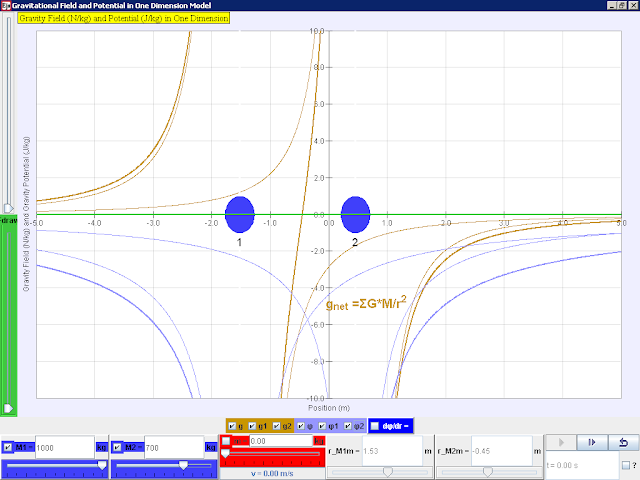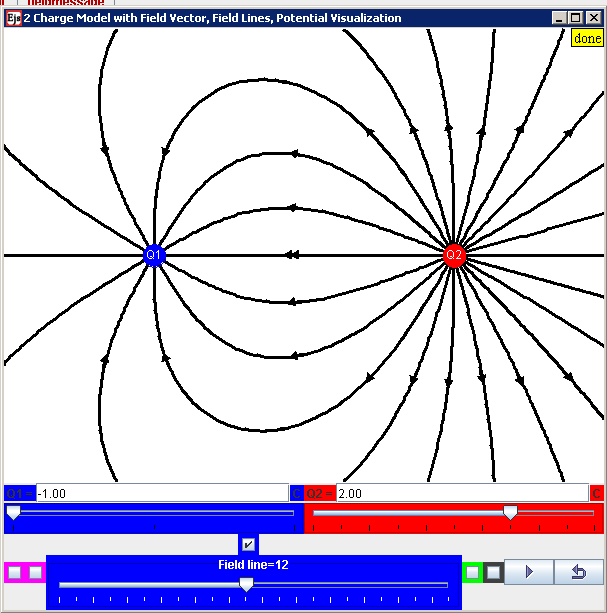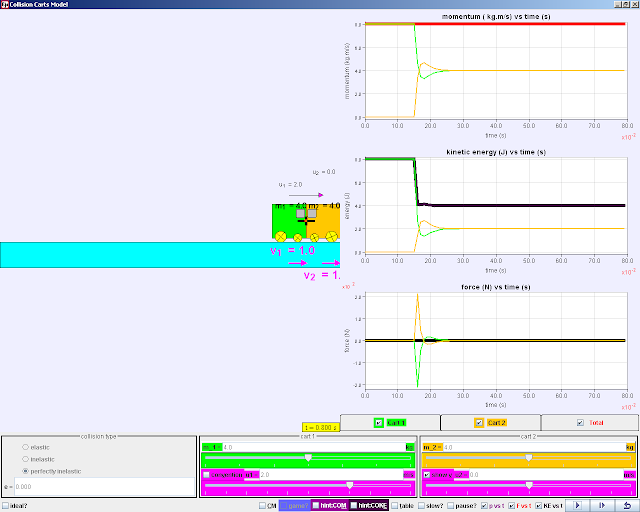http://weelookang.blogspot.sg/2013/05/21-may-nie-sharing.html
Briefing Document: Open Educational Resources and Open Source Physics in Singapore (2013)
Document Overview:
This document analyzes a webpage detailing a sharing session ("21 May NIE Sharing") focused on the implementation of Open Educational Resources (OER) and Open Source Physics (OSP) in Singaporean schools. The page primarily acts as a repository for links to various interactive physics simulations, developed using Easy Java/JavaScript Simulations (EJS), and associated teaching resources. It highlights a collaborative effort between several Junior Colleges (JCs) and the Ministry of Education (MOE) to create and disseminate these materials under a Creative Commons license.
Key Themes:
- Open Source and Creative Commons: The core theme is the promotion and application of open-source educational resources. The simulations are explicitly stated as being "licensed creative commons attribution," emphasizing the collaborative, shareable nature of the materials. This is coupled with the goal of sharing pedagogical practices and building a teacher support community, aiming for wider adoption and translation of the learning resources.
- Inquiry-Based Learning: The approach to using the simulations is strongly aligned with guided inquiry learning. The document states: "How: ideal guided inquiry, could be teacher demonstration if school constraints overrule learning problems." This suggests a pedagogical shift from traditional lecture-based instruction to one where students actively explore physics concepts through interactive simulations, supported by thoughtfully designed worksheets. The resources are designed to allow for data gathering and scientific measurement for inquiry-based learning.
- Collaborative Development: The project is a collaborative effort among multiple Junior Colleges (RVHS, YJC, AJC, IJC, SRJC), supported by the MOEHQ-ETD. This indicates a coordinated approach to curriculum development, with various schools contributing and sharing their expertise. Each simulation often has associated worksheets created by a specific lead JC, promoting a distributed model of content creation.
- Technology Integration in Physics Education: The use of Easy Java/JavaScript Simulations (EJS) is central to the project. These simulations offer interactive, visual representations of complex physics phenomena, offering students ways to manipulate variables and observe outcomes, something which may not be possible with traditional classroom resources. The document provides download links for both EJS and the necessary Java runtime, making it clear how to access these resources. The use of HTML5 applets further demonstrates the push towards web-based accessibility.
- Variety of Physics Topics: The resources cover a wide range of physics topics, including:
- Mechanics: Collision carts, projectile motion, falling magnet, Kepler's laws, gravitational fields, satellite motion, frictional models, energy models, etc.
- Waves: Ripple tank, wave superposition, double/single slit diffraction
- Electromagnetism: Electric fields, magnetic fields, Lorentz force, DC motors, AC generators.
- Other areas: Optics (lenses), Thermodynamics (Brownian motion).
- The document includes a section on "Popular Tags", further indicating the broad coverage of content.
- Community and Scaling Efforts: The document emphasizes community support for teachers through "eduLab@AST and ETD Learning Communities." The "Scaling Effort" section outlines the aim of expanding the project's reach through avenues like "Friends of eduLab," "Learning Communities," publications ("I in Practice"), and various outreach programs. The intention is to create a self-sustaining ecosystem for OER implementation.
- Continuous Development and Improvement: The document shows a progression of updates and revisions, with different versions of simulations and worksheets being mentioned. This suggests ongoing efforts to refine and improve the OER materials based on feedback and experience. For example, some wave models had changes made due to teacher feedback. The sharing of new workshops and presentations listed at the bottom of the page also support ongoing development and improvement.
Important Ideas and Facts (with Quotes):
- Open Source Physics: The main focus is on "Open Source Physics," with the curriculum being "developed by RVHS, YJC, AJC, IJC and SRJC supported by MOEHQ-ETD."
- Licensing: All models created are "shared licensed creative commons attribution."
- Pedagogical Approach: The primary approach is "ideal guided inquiry," with the note that "could be teacher demonstration if school constraints overrule learning problems."
- Technology: "Easy Java/JavaScript Simulations (EJS)" is used to create the interactive models, with links provided for download and setup. Many of these are also implemented as HTML5 applets for greater accessibility.
- Collaboration: Multiple JCs are involved, with each often leading on the worksheet development for specific simulations. (e.g., "worksheets by (lead) AJC", "worksheets by (lead) RVHS", etc.)
- Resource Variety: There is a large and comprehensive suite of physics simulations addressing diverse topics and learning objectives, along with a variety of supplementary materials (e.g., Tracker video analysis resources, worksheets).
- Scaling: The project includes dedicated plans to expand the use of OER and open-source physics resources through various channels, fostering a wider adoption within Singapore's education system.
Specific Examples:
- Collision Carts: Multiple simulation and worksheet links from different JCs are provided, with the statement, "collision cart http://weelookang.blogspot.sg/2013/03/collision-carts-real-and-ideal-combined.html".
- Falling Magnet: Similar to the collision carts, several links to simulations and worksheets are shared, e.g., "falling magnet through coil simulation... worksheets by (lead) AJC".
- Ripple Tank: The document highlights "Ripple Tank Model (Wee, Duffy, Aguirregabiria, & Hwang, 2012)", including realistic 2D and 3D visualizations.
- Gravitational Field: Resources covering "gravitational field," "potential," "Earth and Moon gravity systems" are abundant, showcasing the depth of resources created.
Conclusion:
This document reveals a significant initiative in Singapore to leverage open-source resources and interactive simulations to enhance physics education. It emphasizes collaborative development, inquiry-based learning, and the power of technology in engaging students with complex scientific concepts. The sheer volume of shared resources, coupled with the focus on community and scaling, suggests a commitment to making these learning tools accessible and sustainable within the educational landscape. The document showcases a comprehensive and evolving project, with ongoing workshops and presentations aimed to facilitate the adoption and improvement of these interactive simulations.
21 May NIE Sharing
Setup:
- http://www.um.es/fem/EjsWiki/Main/Download EJS_4.3.7_130516.zip
- http://www.oracle.com/technetwork/java/javasebusiness/downloads/java-archive-downloads-java-client-419417.html#java3d-1.5.1-oth-JPRjava3d-1_5_1-windows-i586.exe
What: Open Source Physics
- curriculum developed by RVHS, YJC, AJC, IJC and SRJC supported by MOEHQ-ETD http://weelookang.blogspot.sg/2013/03/moe-excel-fest-2013-scaling.html
- models created and shared licensed creative commons attribution http://weelookang.blogspot.sg/p/physics-applets-virtual-lab.html
How: ideal guided inquiry, could be teacher demonstration if school constraints overrule learning problems.
 |
| version 8March 2013. http://weelookang.blogspot.com/2010/06/ejs-open-source-kepler-system-model-by.html https://dl.dropbox.com/u/44365627/lookangEJSworkspace/export/ejs_KeplerSystem3rdLaw03.jar author: timberlake and lookang worksheets by (lead) YJC: same link of four simulations https://www.dropbox.com/s/53vztw6meupn4r5/GravitationYJC.zip |
 |
| version 08 March 2013 added g1 g2 and phi1 and phi2 drawings as suggested by lawrence during 5th IPSG. http://weelookang.blogspot.sg/2010/08/ejs-open-source-gravitational-field.html https://dl.dropbox.com/u/44365627/lookangEJSworkspace/export/ejs_GField_and_Potential_1D_v7wee.jar worksheets by (lead) YJC: same link of four simulations https://www.dropbox.com/s/53vztw6meupn4r5/GravitationYJC.zip |
 |
| version Jan 2013 http://weelookang.blogspot.sg/2010/08/ejs-open-source-gravitational-field_10.html picture of computer model of Earth and Moon gravity system https://dl.dropbox.com/u/44365627/lookangEJSworkspace/export/ejs_GFieldandPotential1Dv7EarthMoon.jar author: lookang and andrew based on andrew duffy early model worksheets by (lead) YJC: same link of four simulations https://www.dropbox.com/s/53vztw6meupn4r5/GravitationYJC.zip |
 |
| version 08 March 2013 with reconnected html and zoom slider http://weelookang.blogspot.sg/2010/07/ejs-open-source-geostationary-satellite.html https://dl.dropbox.com/u/44365627/lookangEJSworkspace/export/ejs_EarthAndSatelite.jar author: lookang and paco worksheets by (lead) YJC: same link of four simulations https://www.dropbox.com/s/53vztw6meupn4r5/GravitationYJC.zip |
 |
|
Ripple Tank Model (Wee, Duffy, Aguirregabiria, & Hwang, 2012) with simplified physics equations modeled, realistic 2D and 3D (shown) visualizations, hints and scientific measurement tools for inquiry activities and data gathering for inquiry learning
worksheets by (lead) IJC: https://www.dropbox.com/s/ssfismpu1683l3k/RippleTankIJC.ziphttps://dl.dropbox.com/u/44365627/lookangEJSworkspace/export/ejs_Ripple_Tank_Interferencewee07try.jar IJC: https://www.dropbox.com/s/dyvzrhuhzecxx7c/RippleTankIJC2013.docx RVHS: https://www.dropbox.com/s/pnbi0k6ww1zcmv8/RippleTankRVHS.zip YJC: https://www.dropbox.com/s/khlnwerjoienknh/RippleTankYJC.zip |
 |
| http://weelookang.blogspot.com/2010/06/open-source-ejs-superposition-of-2.html added (1) autoscale x axis false, (2) -T/8 button (3) blue color for wave 2 for greater contrast on the projector screen thanks to joshua yeo. https://dl.dropbox.com/u/44365627/lookangEJSworkspace/export/ejs_WaveFunctionPlotterSuperpositionwee01.jar author: wolfgang and lookang worksheets by (lead) SRJC:https://www.dropbox.com/s/uslrrrdkyq2puqe/WavesSRJC.zip |
 |
| Projectile Motion (with/without air resistance) http://weelookang.blogspot.com/2010/06/ejs-open-source-creative-commons.html https://dl.dropbox.com/u/44365627/lookangEJSworkspace/export/ejs_users_sgeducation_lookang_Projectile02.jar author: lookang based on the works of paco worksheet by RVHS (lead): https://www.dropbox.com/s/6tv1twkc5u92pb2/P04%20EduLabs%20%28tr%29%20v2wee.doc |
 |
| version 26feb 2013 electric field lines drawn when Q1=-1C, Q2 = 2C http://weelookang.blogspot.com/2013/02/ajc-lesson-with-2-charges-simulation.html https://dl.dropbox.com/u/44365627/lookangEJSworkspace/export/ejs_twopointcharges18q2work.jar original authors: Fu-Kwun Hwang and lookang and szeyee worksheet by: AJC (lead): https://www.dropbox.com/s/pkh2q4ktsz7pmlf/EJS%20worksheet.docx |
Overview (10 min)
- Overview and Purpose
- Share and communicate
- pedagogical practices that have emerged from our projects
- community support for teachers such as eduLab@AST and ETD Learning Communities
- Explore areas of collaboration
- Share and communicate
- Ideas to Practice
- TfL Translation Projects
- Scaling Effort
- eduLab@AST –Friends of eduLab
- Learning Communities
- Publications – I in Practice
- Outreach Effort
Hand-son (60 min)
- 2 Learning Stations
- Presenters share about “What” and “How”.
- Incorporate a bit of hands on.
- Answer queries
- Participatory Learning in Maths (Yoong Kheong)
- MaPS (Thong)
- Science Inquiry – OSP (Loo Kang)
- Mobile Learning (Nelson)
Discussion (15 min)
- Areas of collaboration
FAQ on Open Source Physics (OSP) in Singapore
- What is Open Source Physics (OSP) as implemented in Singapore, and what is its main goal?
- Open Source Physics in Singapore, primarily led by educators, involves the collaborative development and sharing of interactive physics simulations and models using tools like Easy JavaScript Simulations (EJS). The core goal is to enhance physics education by providing freely accessible, customizable, and interactive resources that support inquiry-based learning. This initiative aims to move beyond traditional methods, empowering students to explore physics concepts through virtual experimentation and visual models.
- What types of resources are included within the Open Source Physics initiative?
- The resources developed under the OSP initiative encompass a wide array of interactive simulations and models, covering diverse topics in physics, including but not limited to: mechanics (e.g., collision carts, projectile motion), gravitation (e.g., Kepler's laws, gravitational fields), waves (e.g., ripple tanks, wave superposition), electromagnetism (e.g., magnetic fields, Faraday's Law), and more. These are often paired with worksheets designed to guide student inquiry and exploration. Additionally, there are resources to analyse real world data such as the Tracker software and interactive tools for math.
- How are these OSP resources created and licensed?
- The OSP resources are created using Easy JavaScript Simulations (EJS), a tool that allows for the development of interactive simulations. These simulations are then shared and made available under a Creative Commons Attribution license. This means that they are free to use, share, and adapt, provided appropriate credit is given to the original authors. The underlying EJS library has its own commercial license managed by the University of Murcia.
- Who are the primary contributors to the Open Source Physics initiative in Singapore?
- The primary contributors include physics teachers and educators from various Junior Colleges and other educational institutions in Singapore, such as River Valley High School (RVHS), Yishun Junior College (YJC), Anderson Junior College (AJC), Innova Junior College (IJC), and Serangoon Junior College (SRJC), with support from the Ministry of Education Headquarters-Educational Technology Division (MOEHQ-ETD). Individuals like Loo Kang Wee have also contributed significantly. Additionally, collaborations have occurred with international researchers in computational physics.
- How is inquiry-based learning facilitated through OSP resources?
- The OSP simulations are designed to promote guided inquiry. Instead of passively receiving information, students can interact with the simulations, manipulate variables, observe the outcomes, and draw conclusions based on evidence. Worksheets are often provided to guide students through the process of making predictions, gathering data, and interpreting results. The resources emphasize a "hands-on" approach through virtual experiments.
- Besides physics, are there other subject areas where Open Source resources are being developed?
Yes, while the primary focus has been on physics, there is evidence of open educational resources being developed for other areas, including math. This demonstrates a broader trend of leveraging open-source tools for other educational purposes.
- What kinds of professional development and support are offered to teachers wanting to implement OSP resources?
There are various professional development activities, workshops, and seminars mentioned in the source material aimed at supporting teachers in using OSP resources. These include events focused on computational modeling, simulations, inquiry-based learning, and using specific tools like EJS and Tracker. These sessions are designed to improve teachers' pedagogical practices and help them integrate OSP effectively into their lessons. These opportunities are often supported through collaborations with institutions such as eduLab@AST and various learning communities.
- What is the broader impact and future of OSP in Singaporean education?
The initiative has had a considerable impact within Singapore, being recognized with a Ministry of Education Innergy Award. OSP has been leveraged across various levels of education in Singapore, as well as in regional events. OSP continues to grow as evidenced by workshops, new resources, and presentations over time. Furthermore, the continued interest and development of related tools, such as Tracker, demonstrate a commitment towards innovative learning with open source tools. The use of digital simulation-based lessons is being investigated as a means of enhancing metacognition in Mathematics.


